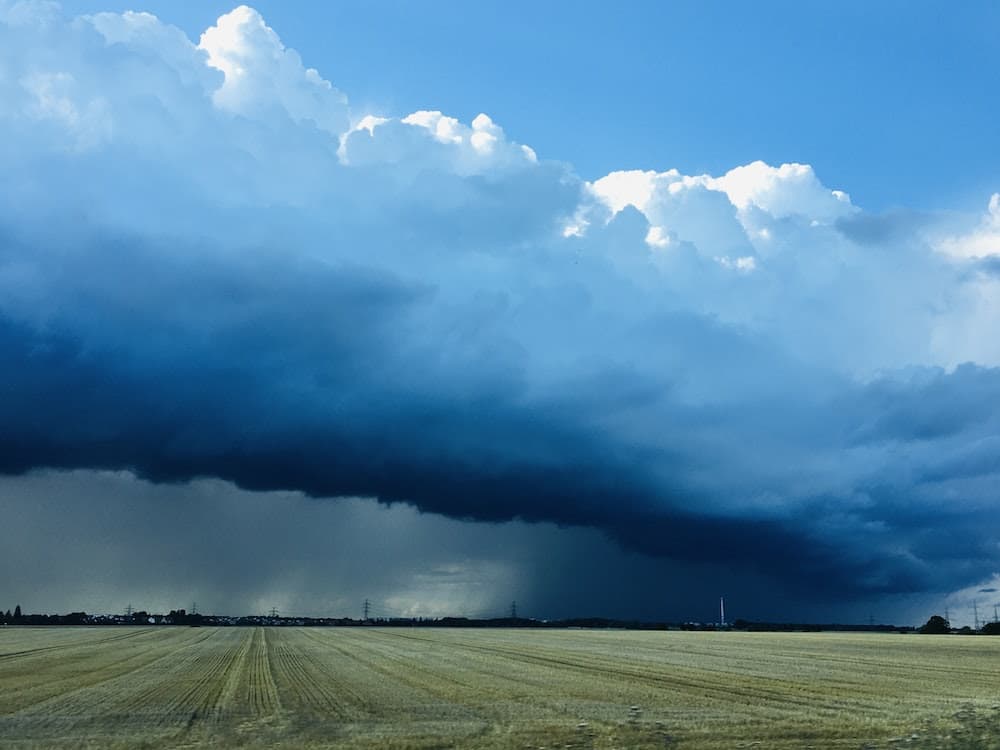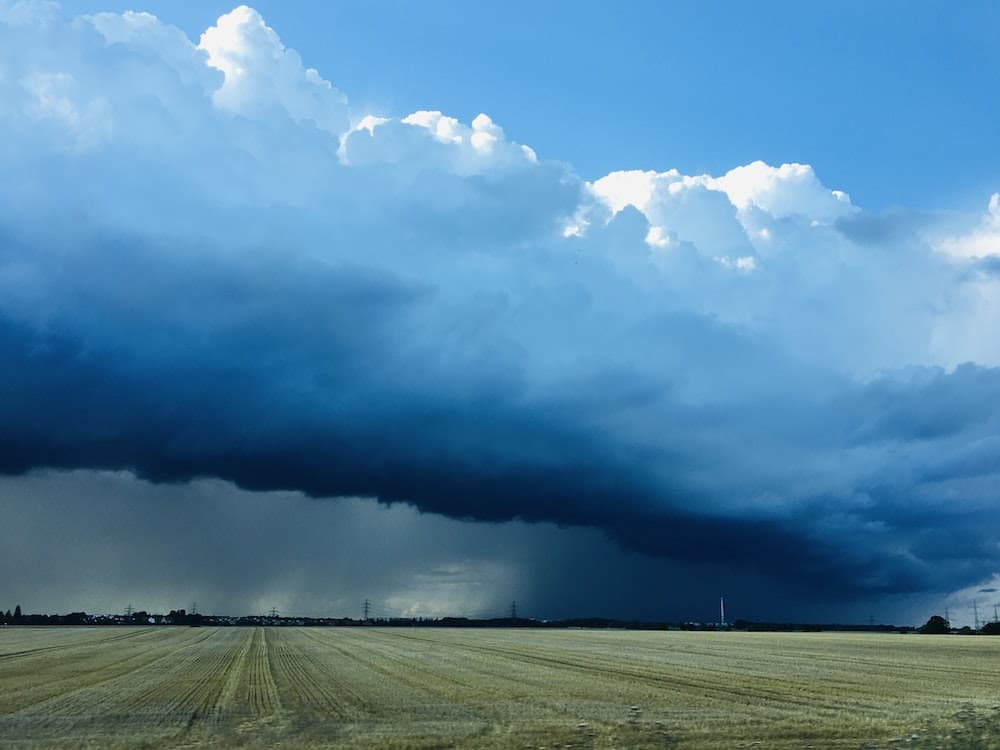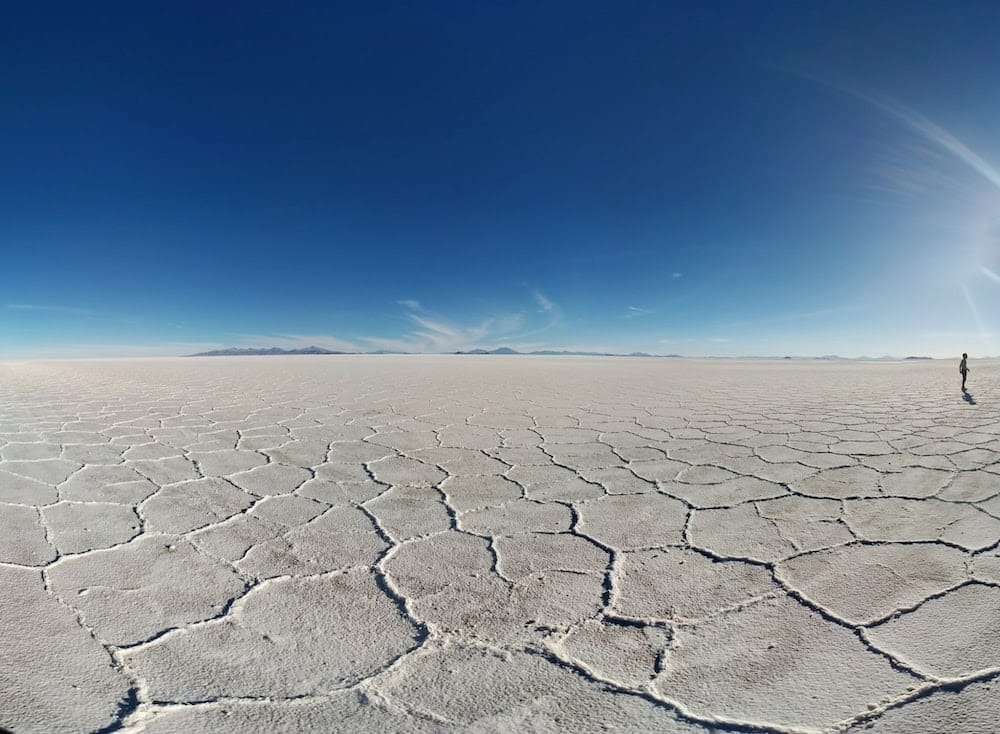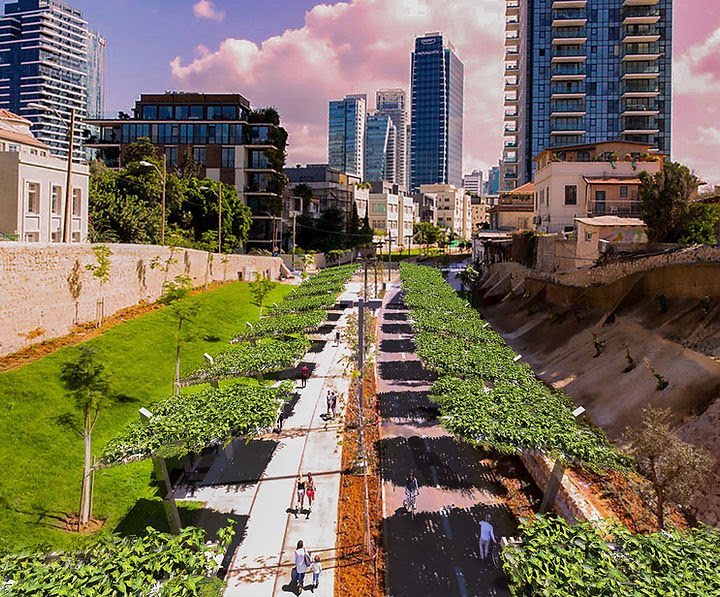
Tornadoes usually begin as extremely violent thunderstorms known as supercell thunderstorms. However, for a tornado to form, other very specific meteorological conditions are required. First, warm air must rise towards the storm clouds. As this air rises, it gains speed, creating an updraft. As more air is drawn into the updraft, it can change direction and gain speed. The updraft also transports moisture to the clouds. The clouds can retain this moisture and use it later to fuel the tornado.
If all these conditions are met, a vortex (rotating air) forms within the storm. This vortex is called a mesocyclone and resembles a funnel-shaped cloud. Cool, dry air wraps around the mesocyclone, creating a down draft. This causes a large temperature difference between the air inside and the air outside the mesocyclone. The lower part of the mesocyclone narrows, causing the winds to rotate faster. From there, the mesocyclone plunges into the storm. If it reaches the moisture that was previously trapped in the storm clouds, it will be sucked into the funnel. This gives the mesocyclone the power it needs to become the huge wall of spinning clouds we call a tornado!
Tornadoes can be very violent, thanks to the extremely high speed of the rotating wind. Wind speeds in a tornado can range from 180 km/h to 400 km/h. How fast is that? Let’s say that on most Canadian highways, you’re driving at 100 km/h. Tornadoes move much faster than that!

Where are tornadoes found?
In Canada, tornadoes are often caused by warm air moving up from the United States. Two major regions of Canada are most likely to be affected by tornadoes. One stretches from the prairies in Alberta to Lake Superior in Ontario. The other covers southern Ontario and southern Quebec. Some scientists believe that central British Columbia may also be a tornado-prone area.
Map of Canada with tornadoes verified between 1980 and 2009. Tornadoes are represented on the Fujita scale by different colors. Adapted from Sills, D. (Environment Canada) et al. (2012). (Environment Canada). Note: Canada now uses the enhanced Fujita scale or EF scale.
In the United States, tornadoes are often caused by cold air moving down from Canada. This occurs in the Great Plains region covering northern Texas, Oklahoma, Kansas, and Nebraska. There are so many tornadoes in this region that the media have nicknamed it Tornado Alley!

Most tornadoes last between 10 and 40 minutes, but can cause enormous damage in that time. They can flip cars, destroy homes, and even rip trees out of the ground!
How can you tell if a tornado is about to strike? What can you do to protect yourself?
There are several ways to tell if a tornado is coming. A funnel cloud is the most obvious warning sign. Severe thunderstorms, especially those that make the sky very dark, may also serve as a warning. Sometimes you’ll hear a rumbling or whistling sound in the air before a tornado strikes.To be on the safe side, listen to your local radio. You can also check with Environment Canada, the government department responsible for monitoring weather conditions and issuing tornado warnings.
If you suspect a tornado is headed your way, get inside quickly. Keep as far away from all windows as possible, as they could shatter! Basements and ground-floor bathtubs are good places to wait out the storm.
Did you know? In Canada and the U.S., tornado strength is measured using the Enhanced Fujita Scale or EF scale. It classifies tornadoes from 0 (light damage) to 5 (extreme damage).
Ruth Bonneville / Winnipeg Free Press archives The rolling hills northeast of Calgary draw a large crowd of storm-chasers hot on the trail of a supercell under scorching heat and looming darkness.
What is a storm chaser?
Not everyone hides when a tornado is coming. People called storm chasers go out and try to get in the path of a tornado! Sounds like an adventure, doesn’t it? Storm chasers may love the thrill of the chase, but they also have more important goals. Their ultimate goal is to be able to predict when and where the next tornado will strike. To achieve this goal, they use special tools to measure tornadoes.Storm chasers are often the first to know when a tornado is coming. They are sometimes the first to inform Environment Canada and its American counterpart. What’s more, they’re frequently on the scene to help when tornadoes cause major damage.Many storm chasers do it as a hobby, but some people make a living out of it.
Blackley, S. (2018, September 17). Are tornadoes in Canada on the rise? A look at the dangerous storms. The Globe and Mail.
Government of Canada (2018, February 21). Tornadoes.
National Geographic. (n.d.). Tornadoes.
Stransky, S. (2014, October 16). How many tornadoes does Canada get? AIR Worldwide.
Weather Wiz Kids (2015). Tornadoes.




